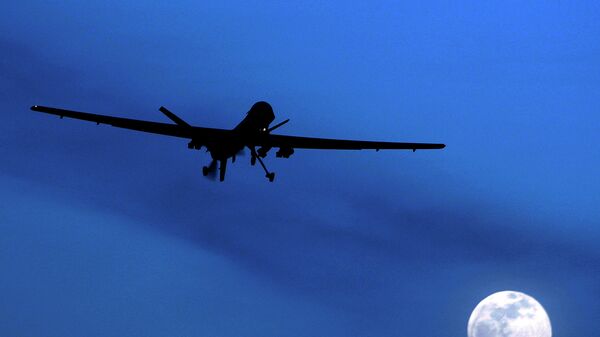According to an investigation by the Bureau of Investigative Journalism, more than 60% of airstrikes conducted by US forces, more than 200 airstrikes, have been conducted to defend local ground forces fighting the Afghanistan insurgency.
This contradicts the US claims that American forces remain in the country to hunt terrorist groups, such as recently-renewed Al-Qaeda, Daesh and Haqqani Network. Since 2014, fighting the Taliban is officially the problem of Kabul's security forces.
The Bureau's investigation suggests that the US military is again quietly yet significantly engaged in fighting their old adversary.
Until 2016, the US Air Force (USAF) has been allowed to conduct airstrikes only as a matter of defense of Coalition ground troops. In 2016, however, the rules officially changed, allowing The USAF to hunt Daesh and Al-Qaeda fighters in what military officials call an "aggressive pursuit", in addition to their defensive function.
Interestingly, the Coalition troops do not have to be "engaged in combat situations" for the USAF to conduct a "defensive" strike, according to Brigadier Charles Cleveland, Resolute Support's deputy chief of staff for communications. What this means is that the USAF can hit Taliban forces,m if the command "identifies that a threat to the force is developing".
"Threat to the force" is a vague term, commonly used without any elaboration for justifying the "defensive" airstrikes.
US officials keep saying that the US military plans to reduce their number in Afghanistan to 5,500 people and the new airstrikes are not a reflection of a change to this plan.
According to a White House spokesman, "The US combat role in Afghanistan ended at the end of 2014, and the President is not considering restarting it."
This does not sound too convincing, since, according to the Bureau's investigation, in absolute numbers, 213 (61%) of 347 airstrikes conducted in first five months of 2016 were classified as defensive, force protection strikes, according to the US press office in Kabul.
The Bureau's investigation also notes a dramatic rise in number of airstrikes compared to the previous year, as 451 weapons were released this year, compared to just 189 in 2016.
These airstrikes included the obliteration of Doctors Without Borders hospital in the town of Kunduz and the recent assassination of Taliban leader Akhtar Mansour. The latter drew significant controversy, since the US military force, stationed in Afghanistan, conducted an airstrike over Pakistani territory.
Mansour's assassination strike was also classified as "defensive". According to US Secretary of State John Kerry, Mansour "was directly opposed to peace negotiations." One could argue that this was a slip of Mr. Kerry's tongue, as he also added: "And it is important for people to understand that Mullah Mansour, as I said a moment ago, has been actively involved in planning attacks in Kabul, across Afghanistan, presenting a threat to Afghan civilians and to the coalition forces that are there."
Do the US really want to go through the 15-year war with Taliban all over again?




